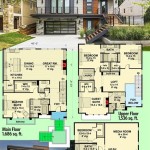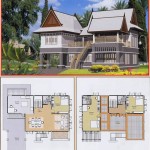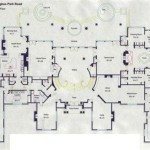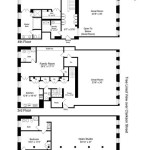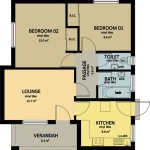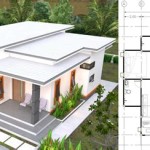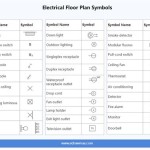Small Spanish Revival Home Plans: Architectural Charm in a Compact Footprint
Spanish Revival architecture, with its roots in the Spanish Colonial period, evokes a sense of warmth, history, and sophistication. This architectural style, characterized by features such as stucco walls, red tile roofs, arched doorways, and wrought iron details, has long been admired for its aesthetic appeal. While often associated with larger estates, the principles of Spanish Revival design can be successfully adapted to smaller homes, offering a unique blend of elegance and practicality for modern living.
Small Spanish Revival home plans are gaining popularity as homeowners seek to downsize without sacrificing architectural character. These plans prioritize efficient space utilization while incorporating the defining elements of the style. The result is a charming and comfortable residence that embodies the spirit of the Spanish Revival tradition in a manageable and affordable format. This article will explore the essential features of small Spanish Revival home plans and highlight key considerations for those considering this architectural style.
Essential Architectural Features
The defining characteristics of Spanish Revival architecture are crucial to replicating the style in a smaller home. These features contribute to the overall aesthetic and historical accuracy of the design. Careful attention to detail is necessary to achieve the desired effect, even within a limited footprint.
One of the most recognizable features is the stucco exterior. This material provides a textured, often off-white surface that is both durable and visually appealing. The texture can range from smooth to heavily textured, depending on the desired aesthetic. The stucco is not merely a cosmetic treatment; it provides insulation and helps regulate the interior temperature of the home, making it well-suited for warmer climates. The color is typically a shade of white, cream, or beige, reflecting sunlight and contributing to the cool interior environment.
Red tile roofing is another hallmark of the Spanish Revival style. The clay tiles offer a distinctive look and contribute to the overall sense of history and authenticity. While authentic clay tiles can be expensive, there are numerous composite materials available that mimic the look and feel of clay at a lower cost and with reduced weight. The roof's pitch is typically low to moderate, and often features overhangs to provide shade and protect the walls from the elements. The rhythm created by the overlapping tiles adds visual interest to the roofline.
Arched doorways and windows are prevalent in Spanish Revival architecture. These curves soften the sharp lines of the structure and add a touch of elegance. Arched openings are often used for entryways, hallways, and patios, creating a sense of flow and connection between different areas of the home. Windows can also be arched or have rounded tops, echoing the curves found in the doorways. The size and placement of the windows are carefully considered to maximize natural light while maintaining privacy.
Wrought iron details are another important element. These can be incorporated into balconies, window grilles, light fixtures, and gates. The intricate patterns and decorative features of wrought iron add a touch of sophistication and craftsmanship. Black wrought iron is the most common choice, providing a strong contrast against the light-colored stucco walls. These details are not only aesthetically pleasing but also serve a functional purpose, such as providing security and ventilation.
Courtyards are a common feature of larger Spanish Revival homes, but can be adapted to smaller plans as well. Even a small courtyard or patio can create a private outdoor space that evokes the feeling of a traditional Spanish courtyard. These spaces are often used for dining, relaxing, or gardening, extending the living space outdoors. Fountains, potted plants, and comfortable seating can further enhance the atmosphere of the courtyard. The courtyard provides a visual focus and contributes to the overall sense of tranquility.
Space Optimization in Small Plans
Successfully implementing a Spanish Revival design in a small home requires careful planning and optimization of space. The goal is to create a functional and comfortable living environment without sacrificing the architectural integrity of the style.
Open floor plans are often utilized to maximize the sense of space. Combining the living room, dining area, and kitchen into a single open space creates a more spacious feel than individual rooms. This allows for better flow of traffic and facilitates social interaction. The placement of furniture and the use of visual cues, such as rugs and lighting, can help define different areas within the open space. Strategically placed windows and doors can also enhance the feeling of openness and connection to the outdoors.
Built-in storage solutions are essential for maximizing space in a small home. Shelves, cabinets, and drawers can be integrated into the walls and other areas to provide ample storage without taking up valuable floor space. Built-in seating areas can also offer hidden storage beneath the cushions. These solutions help minimize clutter and keep the home organized. The design of the built-ins should complement the Spanish Revival style, with details such as arched openings and decorative hardware.
Vertical space can be effectively utilized to create a sense of spaciousness. High ceilings and tall windows can make a room feel larger and more airy. Lofts can be added to provide additional living or storage space. The use of vertical elements, such as bookshelves and artwork, can draw the eye upwards and create a sense of height. Careful consideration of lighting is also important to ensure that the upper areas of the room are well-lit.
Multifunctional spaces are another key strategy for optimizing space in a small home. A guest room can double as a home office, or a dining area can be used as a workspace during the day. Furniture should be chosen with versatility in mind, such as a sofa bed or a folding table. This allows homeowners to adapt their living space to different needs without sacrificing functionality. Careful planning and thoughtful design are essential to creating spaces that are both functional and aesthetically pleasing.
Small outdoor spaces, such as patios and balconies, can extend the living area and provide a connection to the outdoors. These spaces can be designed to reflect the Spanish Revival style, with features such as wrought iron railings, terracotta tiles, and potted plants. Outdoor furniture should be comfortable and durable, and the space should be designed to be easily accessible from the interior of the home. Even a small outdoor space can significantly enhance the quality of life in a small home.
Interior Design Considerations
The interior design of a small Spanish Revival home should complement the architectural style and create a cohesive and inviting atmosphere. The choice of materials, colors, and furnishings should reflect the warmth and elegance of the Spanish Revival tradition.
Neutral color palettes are typically used to create a sense of calm and spaciousness. Off-white, cream, and beige tones are common choices for walls and ceilings. These colors provide a backdrop for more vibrant accents. Warm earth tones, such as terracotta, ochre, and brown, can be used for flooring, furniture, and accessories. The use of natural materials, such as wood and stone, further enhances the warmth and texture of the space.
Tile is a common flooring material in Spanish Revival homes. Terracotta tiles are a classic choice, providing a warm and rustic look. Patterned tiles can be used to add visual interest and create focal points. Wood flooring can also be used, but it should be a warm, natural tone. Area rugs can be used to define different areas within the open floor plan and add softness to the space.
Furniture should be comfortable and functional, with a focus on quality craftsmanship. Traditional Spanish Revival furniture often features dark wood, leather upholstery, and wrought iron details. However, lighter-colored furniture can also be used to create a more contemporary look. The scale of the furniture should be appropriate for the size of the room, and pieces should be chosen with versatility in mind.
Textiles play an important role in adding warmth and texture to the interior. Linen, cotton, and wool are common choices for curtains, cushions, and throws. Patterns and textures should be chosen to complement the overall color palette and style. Handwoven rugs, embroidered pillows, and decorative tapestries can add a touch of authenticity and character.
Accessories should be carefully chosen to reflect the Spanish Revival style and add personal touches. Pottery, artwork, and decorative objects can be used to create focal points and add visual interest. Wrought iron candle holders, ceramic vases, and framed prints are common choices. Plants can also be used to add life and color to the space. The key is to avoid clutter and choose accessories that are meaningful and contribute to the overall aesthetic.
Lighting fixtures should complement the architectural style and provide ample illumination. Wrought iron chandeliers, sconces, and pendant lights are common choices. The lighting should be layered, with a combination of ambient, task, and accent lighting. Dimmers can be used to adjust the lighting levels and create different moods. Natural light should also be maximized through the use of large windows and skylights.

Small Spanish Contemporary House Plan 61custom Modern Plans Style Homes

Bungalow House Plans Spanish Style Homes Craftsman

1927 American Builder Spanish Revival Colonial House Plans Vintage Style Homes

Spanish Revival Style Home 1926 Universal Plan Service No 543 House Plans Portland Homes

Small Spanish Contemporary House Plan 61custom Modern Plans

Bungalow House Plans Colonial Mediterranean

House Plan Mercato Sater Design Collection

1930 Practical Homes Ranch House Plans Blueprints

1928 Home Builders Catalog Spanish Style Homes How To Plan Vintage House Plans

Small Spanish Style Home Plans Blueprints

